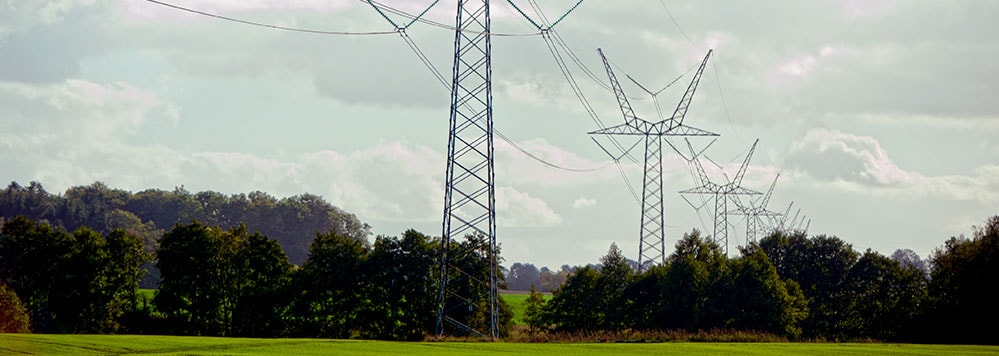Insights
- Electricity is vital to a well-functioning, regenerative society. However, the existing infrastructure is under pressure. The rise of electric vehicles (EVs), building electrification, microgrid development, climate disasters, and the rush toward renewables have made vulnerabilities more pronounced.
- A resilient electric grid is now paramount. Grid resilience is about planning for, operating through, and predicting grid problems upfront.
- Nations, from Singapore to the US, are struggling to keep their grids running, with various levels of disruption.
- Digital twins provide a way to reduce operating costs, extend equipment life, and troubleshoot unknown vulnerabilities. They are a complex autonomous model that can at once predict and take corrective action.
- The sophistication level of digital twins varies between countries, ranging from descriptive (“what happened?”) to cognitive (“what actions can be taken automatically to heal?”)
- Grid operation optimization is another use case. Here, artificial intelligence works with the twin to reliably operate the grid during emergency events and run the grid in an auto-pilot mode.
- A holistic grid assurance strategy should use cognitive (most advanced) digital twin technology, enabling grid operators to ensure public safety and grid stability, and an enviable grid to become carbon neutral by 2050.
Electricity is vital to a well-functioning, regenerative society. However, the existing infrastructure is under pressure due to the rise of electric vehicles (EVs) and building electrification. Microgrid development, climate disasters, and the rush toward renewable power like solar and wind or other low carbon fuels have made vulnerabilities more pronounced.
From the US to Europe and further afield to Singapore and Japan, governments and private bodies are putting significant financial heft behind generating new electricity sources.
A resilient electric grid is a big part of this ongoing transformation. Grid resilience is about planning for, operating through, and predicting grid problems upfront instead of letting the grid fail and recover. And if the situation still occurs, it’s about a quick recovery.
Grid resilience is also a core element for a decarbonized clean-energy future. As Kwasi Kwarteng, former chancellor of the exchequer, and at the time the secretary of state for business and energy, recently said, “Over the coming decades, Britain will need many hundreds of billions of pounds of investment into clean energy, grid upgrades, and new nuclear power.”1
But grid resilience is not easy to achieve, both in terms of investment dollars and long-term planning. An innovative approach is required to tackle present-day challenges, actively manage electricity networks, and rethink long-term investment strategies.
Even prosperous nations find this difficult.
Singapore has taken significant efforts toward green energy sources, and the US is reimagining ways to keep the grid running in adverse circumstances. However, both face challenges in finding coherent and reliable data to make real-time decisions that keep their national grids running, all the while saving resources, keeping the planet green, and saving lives.
The digital twin predicts future events and enables grid operators to take pre-emptive actions
Part of the solution to grid resilience is the existing assets. These include extra high voltage transformers, circuit breakers, and bushings. But grid assurance goes one better by estimating the likelihood of disruption based on external factors, then making assistance as fast as possible. To this end, modern technology, or more specifically, a digital twin of the electricity grid, is a lifesaver. The twin does not just tell operators what is happening, right here, right now, but predicts future events and enables operators to take required pre-emptive actions.
The digital twin
Digital twins are everywhere, used in industries as disparate as healthcare, energy, financial services, and manufacturing – often to reduce operating costs, extend equipment life, and troubleshoot unknown vulnerabilities. The power industry has also realized this. In fact, digital twins for grid asset management have demonstrated savings of more than 10% while increasing return on assets of 20% using real-time operational simulation.2
A digital twin is a dynamic, virtual representation of a complex system, using both operational (OT) and informational technology (IT). It aligns physical, operational, and functional data across the system’s lifecycle and provides underlying engineering information.
For the electric grid, it can include generation of electrical energy, and transmission and distribution of assets. This virtual environment is built upon and updated by multiple information sources, including geographic information systems (GIS), engineering and maintenance data, and operational supervisory control and data acquisition (SCADA) feeds from sensors, meters, actuators, and field controllers. The data flow between the real and the simulated representation is bidirectional, enabling real-time analytics and decision support (Figure 1).
In some cases, artificial intelligence (AI) algorithms further augment digital twins to meet the needs of different grids, in different countries. That said, a digital twin is a complex autonomous model that can at once predict and take corrective action for the reliability and resilience of complex systems, including electricity grids globally.
Of course, such systems come with their own risks. For instance, huge data collection through them increases the risk of data misuse, exposing the population to security, privacy, and surveillance risks. Actions taken by automated twins might prove counterproductive, or encourage herd behavior, where everyone uses the grid at the same time.
As the Financial Times cogently puts it, “sometimes less information is more useful”.3 However, the most pressing concern business owners have is the risk of misrepresenting the object or system they want to replicate. In the case of a complex system like an electric grid, some components will need to be manually represented using animation and code. This can lead to errors in what-if simulations further down the line.
Figure 1. A real-life, complex digital twin model
Source: Infosys
Different countries, different challenges
Many countries are now in the grips of surging electricity demand, raising prices hugely.4 Demand comes from both vehicle and building electrification, with advances in battery technology from the likes of Tesla and an increase in electrical heating systems making their mark.
Since the Paris Climate Agreement came into being in 2015, governments also mandated a move toward green energy sources, many of which are intermittent (think wind farms) and can be impacted by extreme weather events.
The amount of carbon in the atmosphere is adding to this vulnerability, with floods, fires, and other climate-related events causing disruption to electrical grids worldwide (but especially in cooler climates which are drier, and evaporation is faster). In fact, according to US federal data, there were more than 180 major grid disruptions in the US in 2020, with hurricanes, wildfires, and thunderstorms leading to outages that lasted for days.5 The California Public Utilities Commission (CPUC) has now asked companies operating in the region to conduct a climate vulnerability assessment that covers all assets at risk of climate change. As of May 2022, the body is auditing around 22 electric and gas companies.6
Especially in developing economies, the move toward decentralized utility infrastructure impacts the way the grid is used. For instance, in Africa, universal access to electricity has become a necessity. The existing infrastructure there is insufficient to meet current requirements. In fact, sub-Saharan Africa will need 380GW of electricity by 2040, up from 90GW in 2012. Nonetheless, 530 million people, primarily in rural communities, will remain without power.7
In such a scenario, microgrids can bring a substantial change. Just as the continent leap-frogged fixed-line telecommunications infrastructure to move straight to mobile phone use, decentralized power generation using renewable energy could be the answer for more widespread and decarbonized electrification. “The strategy of some countries is to expand the grid through their regions from large power plants, but there seems to be many countries planning to construct small, distributed power plants to form relatively large microgrids”, says Eiji Takahashi of MHI Engine & Turbocharger (MHIET), interviewed in Forbes.8
All this generates new demands on the electrical grid and ignites differing levels of digital twin innovations across nations, with different maturity levels (Figure 2).
Figure 2. Worldview of electrical grid challenges and digital twin maturity
Source: Infosys
The sophistication level of digital twins varies between countries. And thus, different regions face diverse challenges, for which investments toward grid resilience vary too. For instance, from a consumption standpoint, Singapore is struggling with vehicle electrification, whereas the UK is seeing a big rise in the number of buildings switching over from natural gas. In terms of generation, there is not much difference between territories – everyone wants green energy, batteries for better efficiency, and a smart grid.
Figures 3 and 4 describe different sophistication levels and associated data challenges in implementation, along with considerations and use cases.
Figure 3. Digital twin sophistication levels
Source: Infosys
Figure 4. Digital twin sophistication capabilities, data stewardship, and key use cases
Source: Infosys
Digital twins in the real world
In the UK, National Grid teamed up with Utilidata and Sense to set up a digital twin that maps power flow, voltage, and infrastructure from the substation to the home. In the US, San Diego Gas & Electric has developed an AI system that averts power outages by monitoring infrastructure and alerting local power companies to any potential failure before it happens.9
While the digital twin can perform many tasks, the level of sophistication (informative, predictive, cognitive, etc.) depends on its primary purpose. In the event of a hurricane, a descriptive (lowest level) digital twin will collect various datasets “as-is” to factor in changing climate patterns. In the informative stage, data analysis will be performed to bring in a new dimension to the grid’s physical vulnerabilities and factor in adjacent problems such as increased exposure to cyberattacks. The predictive digital twins, used mainly in Japan and Singapore, can look at transmission assets and predict outages, based on vulnerabilities to extreme weather conditions using weather prediction data and the past performance of similar assets. In the prescriptive stage, the digital twin gives advice on the kind of operations that need to recover from the hurricane, using simulations and what-if scenarios.
Currently, only the US has the capabilities to move to level five digital twins – the cognitive stage. For this use case, the system would automatically direct field technicians (or use automatic actuators in the real world) to raise flood barriers.
Another use case could be to measure grid resilience more accurately using AI/ML, known as grid operation optimization. Here, data analysis (Informative) evaluates and improves business operations, makes network devices more reliable, and offers the opportunity to innovate using self-healing methods. A digital twin with predictive capability could also be made with real-time automated control for executing disaster recovery plans. A country could then reliably operate the grid during emergency events and run the grid in an auto-pilot mode. With the cognitive digital twin doing some work, the system would be able to prewarn adjacent geographies of ongoing issues.
Other relevant application domains of digital twins include energy asset modeling, fault and security diagnosis, and control and business models. For the latter, digital twins could be used by energy firms to manage customer profiles, expectations and raise their awareness about the new energy services that are made available. In this instance, data about customer preferences, behavior, and satisfaction are used to construct digital twins and fed to train and run big data analytics to generate reports for customer awareness.10
Moving ahead
As we continue the critical acceleration toward net zero, the grid will have to strategically balance the intermittency of renewable energy sources like wind and solar (which are estimated to provide 24% of the world’s electricity by 2030 and 62% by 2050)11 and its dependency on weather conditions and extreme weather events. Aging infrastructure is also a worldwide problem, given they are more prone to outages. In fact, power outages cost American businesses over $150 billion per year.12
Even with economic turbulence and the war in Ukraine, and uncertainty of how fuel prices impact the generation mix, global electricity demand is still expected to continue its average growth rate over the five years prior to Covid-19, at approximately 5% growth year-on-year.13
Grid operators across generation, transmission, and distribution do not have time to manually devise viable plans to mitigate emergency situations. That said, we are facing a perfect storm of grid-related vulnerability.
Grid resiliency is then paramount, and one part of a holistic grid assurance strategy should be cognitive digital twin technology.
The ideal 21st-century solution for a fragile, electricity-rich planet will provide cognitive processing/monitoring and control, as firms like PG&E in the US are using. It would provide outage risk prediction for transmission assets, based on their vulnerability to extreme weather conditions. And it would provide real-time decision support for optimal planning and prediction of the impact of building plans (both EVs and electrified buildings) on the state of the grid (Figure 5).
Figure 5. Cognitive-level digital twin for 21st century grid resilience
Source: Infosys
This approach provides AI-enabled corrective actions such as raising flood barriers, redirecting traffic, or just ordering spare parts. The solution harnesses the best of data-driven and physics-driven intelligence.
In the future, insights from digital twins will allow businesses and governments to “migrate from cycle-based asset management to condition-based asset management, whereby predictive analytics drive decision-making instead of arbitrary cycle maps,” says Terry McConnell, Fugro’s director of analytics and cloud automation services. The geodata specialist has used digital twins to mitigate bushfire risks around California, upending the way utilities think about vegetation, structure, and other grid features.14
Grid resiliency is paramount, and a holistic grid assurance strategy should include cognitive digital twin technology
Building such a solution is now beyond urgent. Done properly, it will enable grid operators to ensure public safety during emergency events and grid stability (especially in places like Sub-Saharan Africa). All this with minimal loss of power to customers, and an enviable grid to become carbon neutral by 2050.
References
- The UK’s energy priorities: enhancing energy security and pathways to decarbonization, Kwarsi Kwarteng, June 23, 2022, Gov.UK.
- How can electricity grids benefit from digital twin technology?, Jerome Fournier, October 23, 2020, Nexans.
- The birth of ‘digital twins’ will transform our world, John Thornhill, January 22, 2020, Financial Times.
- See Ref 1.
- Targeting grid resilience with digitalization, March 25, 2022, Power Engineering International.
- Audits in progress, March 10, 2022, California Public Utilities Commission.
- A new Africa energy world: A more positive power utilities outlook, July, 2015, PwC.
- Decentralized renewable energy could meet Africa’s vast needs and make an important leap decarbonization, Andrea Willige, September 27, 2021, Forbes.
- Digital twins in energy are powerful and putting out fires, Giacomo Lee, July 7, 2021, Verdict.
- An overview of digital twins application domains in smart energy grid, Tudor Cioara, Ionut Anghel, Marcel Antal et al, Arxiv.org.
- Riding the storm: A network digital twin to enhance electric grid reliability and resiliency, Colin Parris, GE Digital.
- A day without power: Outage costs for businesses, Asim Hussain, October 8, 2019, Bloom Energy.
- Global electricity demand growth is slowing, weighed down by economic weakness and high prices, July 20, 2022, IEA.
- See Ref 9.










